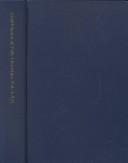| Listing 1 - 10 of 1460 | << page >> |
Sort by
|

ISBN: 0253338816 9780253338815 Year: 1989 Publisher: Bloomington (Ind.): Indiana university press,
Abstract | Keywords | Export | Availability | Bookmark
 Loading...
Loading...Choose an application
- Reference Manager
- EndNote
- RefWorks (Direct export to RefWorks)
Book
ISBN: 1412362288 Year: 2008 Publisher: Chicoutimi : J.-M. Tremblay,
Abstract | Keywords | Export | Availability | Bookmark
 Loading...
Loading...Choose an application
- Reference Manager
- EndNote
- RefWorks (Direct export to RefWorks)
Book
ISBN: 2763744656 2763744648 9782763744650 Year: 2020 Publisher: Quebec
Abstract | Keywords | Export | Availability | Bookmark
 Loading...
Loading...Choose an application
- Reference Manager
- EndNote
- RefWorks (Direct export to RefWorks)
« Les Cris, ou Eeyou dans la langue vernaculaire, habitent un vaste territoire, l'Eeyou Istchee, qui s'étend d'est en ouest, des confins de la région saguenayenne à la baie James et jusqu'au sud de la baie d'Hudson. Leur population comprend plus de 18 000 membres inscrits répartis en dix communautés. Peuple chasseur par excellence, les Cris ont aussi vécu traditionnellement de piégeage, de pêche et de cueillette. L'essor économique qu'ils ont connu au XXe siècle et en ce début du XXIe siècle est sans précédent dans l'histoire des Amérindiens du Québec. Ils se sont développés dans de nombreux domaines, dont la foresterie, la construction, les transports et le tourisme. Le présent recueil de récits cris se veut une contribution à la connaissance de ce peuple aux visages multiples, aux héros fiers et indépendants dont les exploits fabuleux restent inoubliables. »-- Quatrième de couverture.
Book
Year: 1885 Publisher: Paris : Perrin,
Abstract | Keywords | Export | Availability | Bookmark
 Loading...
Loading...Choose an application
- Reference Manager
- EndNote
- RefWorks (Direct export to RefWorks)
Book
Year: 1932 Publisher: Leiden : N. v. boekhandel en drukkerij voorheen E. J. Brill,
Abstract | Keywords | Export | Availability | Bookmark
 Loading...
Loading...Choose an application
- Reference Manager
- EndNote
- RefWorks (Direct export to RefWorks)
Book
Year: 1885 Publisher: Paris : Perrin,
Abstract | Keywords | Export | Availability | Bookmark
 Loading...
Loading...Choose an application
- Reference Manager
- EndNote
- RefWorks (Direct export to RefWorks)
Book
Year: 1948 Volume: 23 Publisher: Caracas : Ministerio de Educación Nacional, Dirección de Cultura,
Abstract | Keywords | Export | Availability | Bookmark
 Loading...
Loading...Choose an application
- Reference Manager
- EndNote
- RefWorks (Direct export to RefWorks)
Book
Year: 2018 Publisher: Helsinki : Finnish Literature Society (SKS),
Abstract | Keywords | Export | Availability | Bookmark
 Loading...
Loading...Choose an application
- Reference Manager
- EndNote
- RefWorks (Direct export to RefWorks)
"Traditionally, oral traditions were considered to diffuse only orally, outside the influence of literature and other printed media. Eventually, more attention was given to interaction between literacy and orality, but it is only recently that oral tradition has come to be seen as a modern construct both conceptually and in terms of accessibility. Oral traditions cannot be studied independently from the culture of writing and reading. Lately, a new interdisciplinary interest has risen to study interconnections between oral tradition and book culture. In addition to the use and dissemination of printed books, newspapers etc., book culture denotes manuscript media and the circulation of written documents of oral tradition in and through the archive, into published collections. Book culture also intertwines the process of framing and defining oral genres with literary interests and ideologies. In addition to writing and reading, the study of oral traditions must also take into consideration the culture of publishing. The present volume highlights varied and selected aspects of the expanding field of research into oral tradition and book culture. The questions discussed include the following: How have printing and book publishing set terms for oral tradition scholarship? How have the practices of reading affected the circulation of oral traditions? Which books and publishing projects have played a key role in this and how? How have the written representations of oral traditions, as well as the roles of editors and publishers, introduced authorship to materials customarily regarded as anonymous and collective? The editors represent some of the key institutions in the study of oral traditions in Finland: the University of Helsinki, the Finnish Literature Society, and the University of Eastern Finland. The authors are folklorists, anthropologists, historians and literary historians, and scholars in information studies from Finland, Sweden, Norway, Ireland, and the United States."
Book
Year: 1948 Volume: 23 Publisher: Caracas : Ministerio de Educación Nacional, Dirección de Cultura,
Abstract | Keywords | Export | Availability | Bookmark
 Loading...
Loading...Choose an application
- Reference Manager
- EndNote
- RefWorks (Direct export to RefWorks)
Periodical
Year: 2012 Publisher: Tarragona : Publicacions de la Universitat Rovira i Virgili,
Abstract | Keywords | Export | Availability | Bookmark
 Loading...
Loading...Choose an application
- Reference Manager
- EndNote
- RefWorks (Direct export to RefWorks)
Folk literature --- Folk literature, Catalan --- Folk literature. --- Folk literature, Catalan.
| Listing 1 - 10 of 1460 | << page >> |
Sort by
|

 Search
Search Feedback
Feedback About UniCat
About UniCat  Help
Help News
News